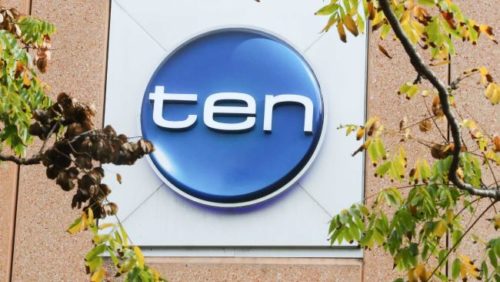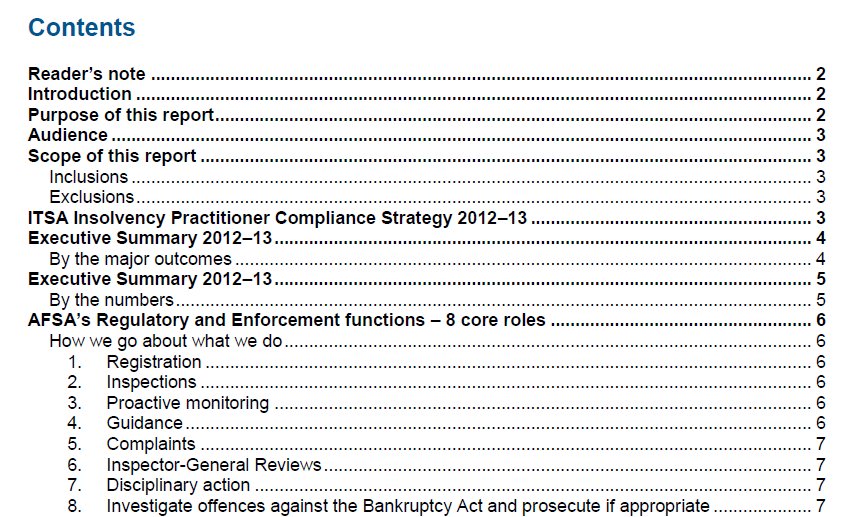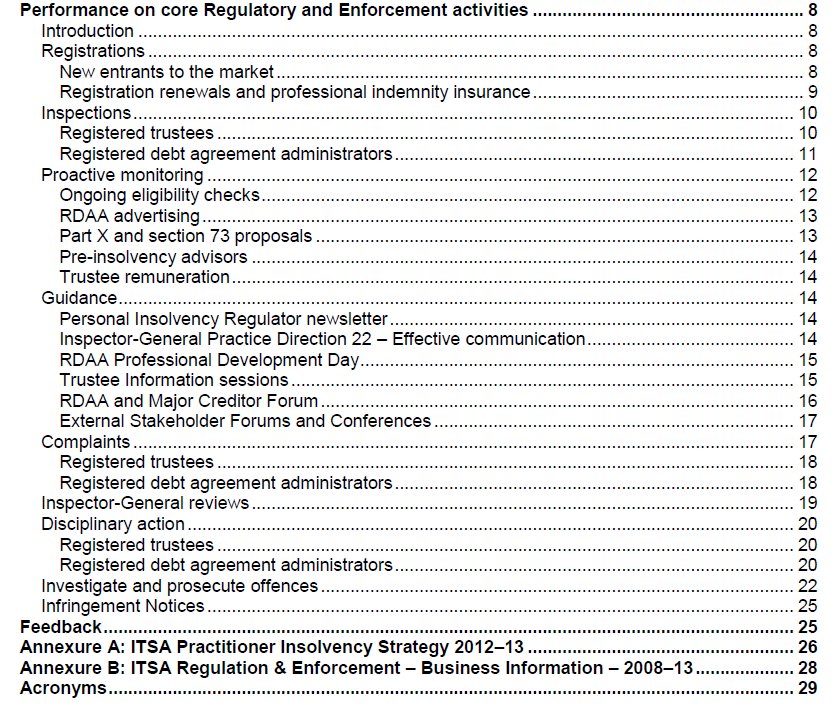Recommendation 17 of the Senate Economics References Committee final report (26/6/2014) on the performance of the Australian Securities and Investments Commission (ASIC) is:
Before making recommendation 17 the Senate Committee’s Report looks at “Reports from industry professionals” including external administrators. It states as follows (note: I’ve removed its footnotes):
External administrators
15.55 The Corporations Act also places an obligation on liquidators, receivers and voluntary administrators (external administrators) to report suspected breaches of the Corporations Act to ASIC….
15.56 Reports made pursuant to these sections are referred to as statutory reports and are an important source of information about possible breaches of the law….
15.57 Liquidators also have the discretion to lodge further reports if, in their opinion, it is desirable to draw the matter to ASIC’s attention.
15.58 In 2012–13, external administrators lodged 9,788 reports with ASIC. Of this number, initial external administrators accounted for 95 per cent or 9,254 reports. ASIC recorded that 81 per cent of the initial reports involved companies with fewer than 20 employees. The construction industry was subject to the highest number of reports accounting for just over 24 per cent. Of the initial external administrators’ reports, receivers lodged one per cent under section 422; administrators lodged 3.8 per cent under section 438D; and 95 per cent of the reports were submitted by liquidators under section 533.
15.59 Importantly, external administrators alleged misconduct in more than two-thirds of reports (6,761) involving an overall possible 16,562 breaches. Although this number accounts for an average of between two and three breaches per report, almost 30 per cent of reports or 2,493 recorded no misconduct. ASIC asked the external administrator to prepare a supplementary section 422, section 438D or section 533 report for 677 of the 6,761 reports that identified possible misconduct. In its analysis of the statistics, ASIC explained that its request for an additional report is a function of its assessment of risk based on a number of factors, including, but not limited to:
* the nature of the possible misconduct reported;
* the amount of liabilities;
* the deficiency suffered;
* the availability of evidence;
* prior misconduct; and
* the advice of the external administrator that the reported possible misconduct warranted further investigation.
15.60 In a 2007 report, the Australian National Audit Office (ANAO) observed that given the large number of statutory reports received by ASIC each year that allege offences against the Corporations Act, it was appropriate that ASIC had systems in place to prioritise its regulatory action, through risk scoring. It found that ASIC’s recording of statutory report information was accurate to a high degree. The ANAO recognised that ASIC could use a wide variety of possible remedies to deal with offences identified in statutory reports or other deficiencies that warranted some sort of regulatory action. They ranged from warning letters to directors for the less serious offences to prosecution and potentially imprisonment for more serious offences. It noted that where ASIC identified that a statutory report raised issues of regulatory significance, it sought further information about the matter from the external administrator.
15.61 According to the ANAO report, ASIC did not always obtain that additional information. Based on its sample, it found that in 40 per cent of instances, ASIC did not obtain additional information that it had requested. The ANAO concluded:
… the small number of statutory reports subject to regulatory action by ASIC each year indicates that there is opportunity for greater regulatory action on these reports.
15.62 Mr David Lombe, President of the Australian Restructuring Insolvency and Turnaround Association (ARITA) was of the view that ANAO’s 2007 findings were still relevant and applicable. He noted the thousands of reports lodged with ASIC each year but not acted upon. In Mr Lombe’s view, there was a ‘general perception within the business community that, if you do certain things at a certain level, there will be no effective review’. He explained further:
“The difficulty that we have as official liquidators is that you get a matter off the court list and often that matter has no funds in it, so there are no available assets. Often that is a process by which directors have deliberately done that—it has been a deliberate course of action. If you report the matter to ASIC and there is no assistance from that space, there is not much you can do. If you felt really aggrieved by it or you felt that it was a matter that was of sufficient importance, you may be able to persuade a firm of solicitors to act on a pro bono basis, but that is very difficult. I found myself in that sort of situation with Babcock & Brown, where I had inadequate funds to be able to pursue a proper investigation. The only thing that was available to me was to ask creditors to fund me, which they did, which then allowed me to do a public examination, which brought out the conduct of directors and other stakeholders in that company. If you do not have funds in a matter, the courses are very limited.”
15.63 By way of example, Mr Lombe expanded on his concerns citing the requirement to lodge a section 533 report, which deals with offences committed by directors. He explained that for the liquidator to understand what has happened, he or she needs to
‘review the books and records, determine the transactions, try to find out what assets are there, look at insolvent trading and look at preference payments and all those sorts of things’.
The liquidator is required to file that report, which takes time. So, according to Mr Lombe, the reports involve both time and money, and often with official liquidations there are no assets at all and, if there are, creditors are effectively paying for the report. He noted that thousands of such reports are lodged with ASIC but most of them come back ‘no further action’. In his view, it is frustrating for liquidators because they feel, ‘Why am I bothering to do it?’ Mr Lombe concluded that ‘you can understand someone’s frustration, where they have reported offences and nothing happens’.
15.64 When asked whether liquidators, in their statutory reports, could assist ASIC to distinguish the very serious breaches from the less so, ARITA indicated that it ‘might be a useful reform’. After considering the matter further, ARITA informed the committee that if it were consulted, it could assist ASIC to determine a risk scoring profile. It explained further, however:
“But we consider that the decision on how the information required by s533 is ‘risk-scored’ for action is ultimately one for the regulator and its decision and methods should not be publicly disclosed. For one thing, this would appear to give the ‘green light’ to the commission of certain offences that are deemed not serious enough to warrant action by ASIC.”
15.65 ARITA also stated that ‘a more co-operative approach between ASIC and liquidators should also be pursued’. The committee believes that ASIC and ARITA should work closely together to develop a more effective and efficient reporting mechanism that would assist ASIC to identify the alleged serious breaches from the less so.”


